访谈|「作为意志和表象的世界」4位艺术家的问题
![]() {{newsData.publisher_name}}
{{newsData.update_time}}
浏览:{{newsData.view_count}}
{{newsData.publisher_name}}
{{newsData.update_time}}
浏览:{{newsData.view_count}}
来源 | {{newsData.source}} 作者 | {{newsData.author}}
北京空间首展「作为意志和表象的世界」呈现了陈映舟、孙逸飞、李喷泉、邢万里的十余件作品。本次展出的四位代理艺术家作为“90一代”的新样本,在各个领域风格上各有突破,邢万里擅长以文本生成的工作为基础,创造幻想世界和意识的具象,在故事中做切片。而孙逸飞将故事作为作品的基石,让晦涩的、抽象的、荒诞的、寓言的故事完整的指向在画面中,形成独特的语言,让每一件作品拥有独立的意志。李喷泉在工作中擅长捕捉市井和田野工作中的粗野感和氛围感,在一幅幅独立的画面中藏匿细腻的情绪,强调情感的输出。陈映舟则强调了故事在画面中的附庸,杂糅更多早期互联网内容来消解意识形态、热点时事、宗教哲学等宏大叙事。对于这场主题为德国哲学家叔本华名作「作为意志和表象的世界」同名展览,我们也向艺术家提出了一些问题:The first exhibition in KeYi Gallery Beijing , "The World as Will and Representation," presents more than 10 works by Chen Yingzhou, Sun Yifei, Li Penquan and Xing Wanli. The four artists in this exhibition, as new samples of the "90’s Generation", have made breakthroughs in various fields of style. Xing Wanli is good at creating representational images of fantasy worlds and consciousness based on the work of text generation, and making slices in stories. Sun Yifei takes stories as the cornerstone of his works, making obscure, abstract, absurd and allegorical stories fully pointed in the picture, forming a unique language, so that each work has an independent will. In her work, Li Penquan is good at capturing the rough sense and atmosphere in the market and field work, hiding delicate emotions in independent pictures and emphasizing the output of emotions. Chen Yingzhou emphasizes the subordination of the story in the picture, and mixes more early Internet content to dissolve the grand narrative of ideology, hot current affairs, religious philosophy and so on.For this exhibition with the title of the German philosopher Schopenhauer's famous work "The World as Will and Representation", we also asked the artist some questions:◆陈映舟(C)、 孙逸飞(S)、李喷泉(L)、邢万里(X)
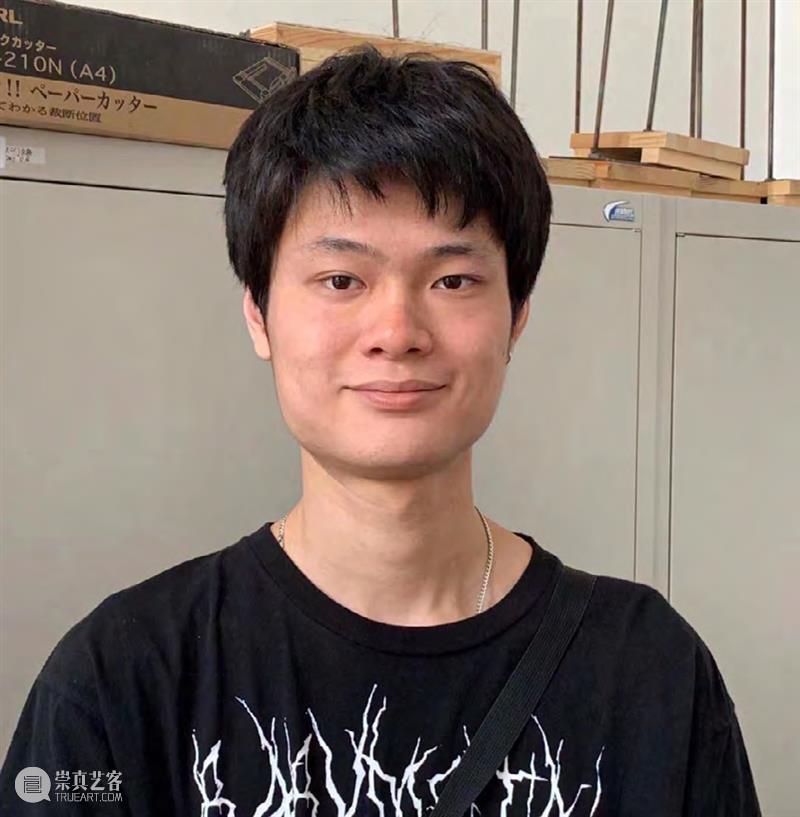
K:我们了解到本次展览中的作品都是你在深圳的新工作室创作的,你认为和你在广州老工作室的状态有什么不同?C:比广州老工作室干净一些,能给自己更多耐心到画面的一些细节的处理上。并且定做画框画布可以去大芬村,都比较专业。K:对你而言,你绘画中最重要的线索是什么?画面中常常出现的“漫画元素”对你而言是重要的么?C:最重要的线索可能是一种人和人之间尴尬而又暧昧处境,这种处境恰好也是漫画的。漫画元素对我来说也没有很重要,只是恰好和我想表达的东西比较契合,而且我也看过一些漫画,所以运用起来会比较顺手。K:你作为“每一件作品都不一样的艺术家”,在工作中会有大量时间用来构思和设计么?C:会的,我觉得我想象中的视野是舞台地。画面像是布景,在这个set里摆放人物和物件。所以有时候觉得自己的工作更像编剧或者舞台美术?K:最近在看什么动画片?很多人对你《生涯》这件作品很感兴趣,画面很直白,但也想听听你对这件作品的考虑?C:最近看异世界转生题材动画比较多。《生涯》 这一件作品起源是一个谜语,猜一个早上四条腿,中午两条腿,晚上三条腿的动物,答案是人类。我觉得把一个人的生涯用一天不同时期来区分还挺有趣的。相比之下我在作品为了画成四格漫画多分了一个时间:破晓,正午,黄昏和夜晚,相当于用来区分现在一个学画画的年轻人的生涯。K:最近还有什么很感兴趣的主题么?你如何筛选和提炼自己要画的主题或元素?C:最近对异世界转生题材比较感兴趣。对于主题的话,我觉得能过自己这关就行,最重要是have fun。K:We have learned that you created all the works in this exhibition in your new studio in Shenzhen. What is the difference between your old studio in Guangzhou and your new studio?C:It(The new studio) is cleaner than the old studio in Guangzhou, and it can give me more patience to deal with some details of the picture. And custom frame canvas can go to Dafen village, which is more professional.K:For you, what is the most important clue in your painting? Is the "comic book element" that often appears in the picture important to you?C:Perhaps the most important clue is an awkward and ambiguous situation between people, which is also comic. Comic elements are not very important to me, they just happen to fit in with what I want to express, and I have read some comics, so it will be easier to use.K:As an "artist whose work is different", do you have a lot of time for conception and design?C:Yes, I think my vision is the stage. The picture is like scenery, and people and objects are placed in this set. So sometimes I feel more like a screenwriter or a stage artist?K:What cartoons have you been watching recently? Many people are interested in your work "Career", the picture is very straightforward, but also want to hear your consideration of this work.C:Recently, I have seen more animations about reincarnation in different worlds. The origin of the word "Career" is a riddle, guess an animal with four legs in the morning, two legs at noon, and three legs at night, and the answer is human. I think it's interesting to divide a person's career into periods of the day. In contrast, I have allocated extra time to draw four panels: dawn, noon, dusk and night, which is equivalent to distinguishing the career of a young person learning to draw now.K:Are there any other topics you are interested in recently? How do you filter and refine the themes or elements you want to paint?C:Recently, I have been interested in the theme of alien reincarnation. As for the theme, I think I can pass myself; the most important thing is to have fun.K:我们注意到你使用喷枪工具,但却几乎没有使用任何喷枪技法,这种“硬画”的手感对你而言是否有特殊意义? S:我选择喷枪是因为我不想再用笔画画了。在本科毕业之后,我几乎对绘画丧失了兴趣,绘画本身的问题不再成为吸引我的对象。我开始尝试去做一些绘画之外的东西,比如和朋友们一起做公众号,一起参加书展,或者写一些文字。当时因为陈逸飞和欧飞鸿做《刺纸》的契机,我开始画一些漫画,我很喜欢伊门多夫的早期作品。那种革命宣传式的,抑或是带有讽刺意义上的作品。那批作品几乎都是图像与文字并存的。从艺术家的角度来说,我相信他的兴趣点并非存在于画面上,而是画面作为文字意义的辅助上。当然如果你愿意,你也可以尝试在绘画角度去阐述那批作品,或是去寻找一些造型趣味与文字或表达结构之间的关联,就像是对于王兴伟绘画的看法一样。但我相信这些并不是伊门多夫自己想要的东西,艺术家早期的作品可以说是纯然的图像作品,就像是我们对于广告或宣传画的看法一样,作者的关注点并不在于画面本身抑或是画面与文字的连结与层次,作者关注的仅仅是有关于社会运动的抑或是革命理想的表达。这一点其实和漫画很像。无可否认每个漫画家都有自己的造型语言或范式,但漫画语言本身并不是故事内容所决定的,漫画家不会仅仅是因为故事内容,而去考虑为这个故事去寻找一个贴合这个故事的画风。事实上很多时候,将画面与内容相锚定与契合的想法本身便是一个先入为主的预先判断,我们首先看到了两者的结合,并以一种想象性的幻想将两者的结合看作一种完美的神话般的效果,一种想象性的合理的结合。孙逸飞漫画创作 / Sun Yifei's Comic Creation甚至当我们去从漫画制作的角度去看,漫画最开始的部分其实不是画,而是文字,是整个漫画的脚本与故事,当故事确定好之后,才开始进行绘制,绘制仅仅是一个制作步骤本身。对于我来说,喷绘与我的内容或故事本身是没有关系的,喷绘对我来说只是一个制作图像的基本手段,一个进行画面写实处理的手段,只不过,我们可以去想象这两者的联系,比如喷绘给人带来的一种虚假感,跟我想进行一些讽刺性的表达之间的联络。事实上我现在也开始相信我喷绘的虚假感与诙谐的画面结合的这一套逻辑了。就像是jojo如果没有jojo立以及时尚的穿搭就不再是jojo了,荒木在jojo的故事内容与人物造型的结合上可真是贴切呢!我们无法想象如果jojo出自手冢治虫的手笔,甚至会对于让手冢执笔jojo嗤之以鼻,大呼没内味了。不过在另一个平行时空里,我们是否也会发出:“手冢治虫在jojo的故事内容与人物造型的结合上可真是贴切呢!”这一类的判断呢。K:叙事几乎出现在你每一件作品,如果类比成你是一个编剧,你认为你在拍什么类型的影片?S:面对不同的故事内容,我可能会想象不同的电影类型。K:很多人好奇那件《仿高剑夫-骷髅图》背后是什么样的故事?这件作品也是你少数没有出现人物的作品。S:高剑父在美术史上被认为是岭南画派的创始人,同时岭南画派包括高剑父本人以及高奇峰、陈树人、何香凝等人都是同盟会的成员。但后来我才知道高剑父本人其实还是支那暗杀团的副团长。支那暗杀团的行动方式就是利用炸弹去刺杀清末的高官,比如水师提督李准,广州将军凤山。他们利用裱画店的幌子去制作炸药。而高剑父所画的《骷髅图》正好是加入暗杀团的入团仪式的必要道具,每个新加入的人都被要求去看那张《骷髅图》以塑造他们视死如归的意志。你在现在很难想象一个艺术家本身同时还是一个恐怖分子,你家外面的画材店事实上是一个炸弹工坊。在我看来,高剑父与暗杀团也是对希望绘画或是艺术能够直接作用于现实的幻想的最有力的冲击。事实上对于现实的最好的介入就是付诸行动,而不是在艺术的幻想中期待革命的成功,或是沉湎于对于过往革命行动的某种数字性的纪念,抑或是在朋友圈里发几句牢骚就可行的。仿高剑父-骷髅图/ Skeleton Figure 高剑父的骷髅图 / Gao Jianfu's Skeleton Painting于是我就想以高剑父的骷髅图去画一个故事,后来我看到刘茵的一张骷髅头上画了一个漫画眼睛的画,于是我想可以把这两者结合在一起。事实上漫画眼在美术史上是一个一直被使用的符号,你可以在像高瑀、村上隆的画面中找到漫画眼的使用。漫画眼本身就是一种症状,它压抑了事物本身令人无法接受的,令人作呕的那部分,使可憎的东西变得可爱。而骷髅头最令我们恐惧的难道不就是那深不见底眼窝吗?这种对于空洞的掩盖,对于恐惧的美化,不正是当我们遭遇直面体制与大他者的时候所采取的强迫症式的象征性仪式或是牢骚吗?S:我的画面中经常会挪用一些我觉得可以使用的契合我的表达的或是与我的故事相关的(与被挪用的艺术家的工作逻辑与想法无关的)艺术家的图像。比如马格里特、伊门多夫、霍珀还有国内的像王兴伟以及我最近的画像陈映舟、高剑父、刘茵、高瑀、村上隆等等,这些艺术家的画都可以给我带来很多图像上的启发。除了艺术家,还有许多电影的图像,比如希区柯克的《惊魂记》、《群鸟》、《夺魂索》,科波拉的《现代启示录》、《窃听大阴谋》,罗梅罗的《鬼作秀》等等。我对于图像的挪用,基本上还是以我想说的故事为前提,然后去构思画面,在这个过程中可能会突然遇到某一个图像,然后启发我去进一步地完成画面。比如说我有一张画叫《索拉里斯星》,它的名字是来自塔可夫斯基的电影《飞向太空》中空间站所遭遇的那个星球的名字,同时也是电影所改编的原版小说的名字。我在读小说的时候,对于将整个索拉里斯星染红的红色太阳产生了很大兴趣,这个红色太阳在小说中被经常提及,但在电影中却几乎没有出现过。直到有一天我看到王兴伟的《八女投江》的那幅画(王兴伟的《八女投江》的整个画面都是挪用的全山石的《八女投江》),我瞬间就觉得这难道不就是索拉里斯的红太阳照耀着星球的场景吗!对我来说,挪用图像就像是某种对于原始图像的重写,一种延异。全山石的八女投江 / Quan Shanshi's "Eight Women Throwing into the River"K:会有观众将你类比为王兴伟式的艺术家,你认为你是在此方向深入探索的么?S:王兴伟一直是我很喜欢的艺术家,我有很多张画面都是从他那里获得的灵感,同时他对于美术史或是同时代的艺术家身上的挪用也是我很喜欢的方式。不过对我来说,就像我前面说的,我是在以一种漫画或是文字插图的逻辑在进行工作,对我来说重要的不是画面质感,而是我想说的东西,在我看来我们是在两种方向上进行的。K:能看到你日常中在翻译和搬运一些哲学文章和信息,你认为哲学是你的灵感来源么?S:我最近在搬运一些精神分析方面的内容,我感觉精神分析其实说不上是一种哲学,它最终是面对临床实践的,是面对一个个真实存在的人的。虽然精神分析尤其是拉康的理论有面向哲学的向度,但那并不是我所感兴趣的方向。对我来精神分析是一个方法,一个视野,通过一系列案例的阅读,让我能够意识到一个矛盾的主体,而不是一个非黑即白的抽象的人。K:We noticed that you use airbrush tools but hardly use any airbrush techniques. Does this "hard painting" feel have a special meaning for you?S:I chose the airbrush because I didn't want to paint with a pen. After graduating from college, I almost lost interest in painting, and the problem of painting itself no longer attracted me. I began to try to do something other than painting, such as making a public account with friends, attending a book fair together, or writing some words.Because of Chen Yifei and Ou Feihong's "Thorn Paper" opportunity, I started to draw some comics, and I loved Imendorf's early works. It's revolutionary propaganda, or it's satire. Almost all of that work is pictorial and textual. From the artist's point of view, I believe his interest lies not in the picture but in the picture as an aid to the meaning of words.Of course, if you want, you can also try to explain the works from the painting perspective or find some correlation between the modelling interest and the text or expression structure, just like the view of Wang Xingwei's paintings. But I believe these are not what Imendorf wants. The artist's early works are purely graphic works, just like our views on advertising or propaganda paintings. The author focuses not on the picture itself or the connection and level between the picture and the text but on the expression of social movements or revolutionary ideals. This is similar to the comic book.There is no denying that every cartoonist has his modelling language or paradigm. Still, the cartoon language itself is not determined by the story's content, and the cartoonist will not consider finding a painting style that fits the story just because of the story's content. Most of the time, the idea of anchoring and matching the picture and the content is itself a preconceived prejudgment; we first see the combination of the two, and in a kind of imaginative fantasy, the combination of the two as a perfect mythical effect, a kind of imaginative reasonable combination.Even when we look at it from the perspective of comic production, the initial part of the comic is not the drawing, but the text, which is the script and story of the whole comic. When the story is determined, the drawing begins and is only a production step. For me, spray painting has nothing to do with my content or the story. For me, spray painting is just a basic means of making images, a means of realistic processing of the picture. Still, we can imagine the connection between the two, such as the false sense that spray painting brings to people and the connection between my desire to carry out some ironic expression.I am now beginning to believe in the logic of the combination of false and humorous images I have painted. Just like Jojo wouldn't be Jojo without Jojo's style and fashion, Araki's combination of Jojo's story content and character styling is appropriate! We can't imagine that if Osamu Tezuka wrote Jojo, we would even turn our noses up at letting Tezuka write Jojo, crying that there is no taste in it. But in another parallel universe, would we also say, "Osamu Tezuka is so appropriate in the combination of Jojo's story content and character shape!" That kind of judgment.K:The narrative appears in almost every piece of your work; if you were a screenwriter, what kind of film do you think you are making?S:Faced with different story content, I might imagine different movie types.K:Many people are curious about the story behind the "Skulls after Gao Jianfu". It's also one of the few pieces you have that doesn't feature charactersS:In the history of art, Gao Jianfu is regarded as the founder of the Lingnan Painting School, which included Gao Jianfu himself, Gao Qifeng, Chen Shuren, He Xiangning and other members of the Tongmenghui. But later, I learned that Gao Jianfu was actually the assassination regiment's deputy head. The assassins used bombs to assassinate senior officials of the late Qing Dynasty, such as Li Zhun, commander of the Navy, and Fengshan, general of Guangzhou.They're using the guise of a frame shop to make explosives. The "Skulls" by Gao Jianfu is a necessary prop for the induction ceremony of joining the assassination regiment, and each new member must look at the "Skulls" to shape their will to return to death. It's hard to imagine now that an artist is also a terrorist, and the painting shop outside your house is a bomb factory.In my opinion, Gao Jianfu and the Assassins are also the most powerful shocks to the fantasy that painting or art can directly affect reality. The best intervention, in reality, is to act on it, not to hope for the revolution's success in artistic fantasy, to indulge in some digital commemoration of past revolutionary actions, or to grumble in the Moment.So I wanted to draw a story with Gao Jianfu's skull and bones, and then I saw a cartoon eye drawing on the skull of Liu Yin, so I thought I could combine the two. In fact, the comic eye is a symbol that has always been used in art history, and you can find the comic eye in pictures like Gao Yu and Takashi Murakami. The comic eye is a symptom that represses the unacceptable, sickening part of the thing itself, making the abomination lovable. And isn't the unfathomable eye sockets that scare us most about skulls? Isn't this concealment of emptiness, this glorification of fear, the obsessive symbolic ritual or whining we do when confronted with the system and the Big Other?K:How do you understand the appropriation of images?S:I often use images of artists that I feel fit with my expression or are relevant to my story (and have nothing to do with the logic and ideas of the artist being appropriated). For example, Magritte, Imendov, Hopper and domestic like Wang Xingwei and my recent portrait of Chen Yingzhou, Gao Jianfu, Liu Yin, high Yu, Murakami and so on, these artists' paintings can bring me a lot of image inspiration.In addition to the artists, there are images from many films, such as Hitchcock's Psycho, The Birds, Rope, Coppola's Apocalypse Now, The Conspiracy to Wiretap, Romero's Ghost Show, and so on. My appropriation of images takes the story I want to tell as the premise and then conceives the picture. In this process, I may suddenly encounter an image that inspires me to complete the picture.For example, I have a painting called the Star of Solaris, named after the planet that the space station encounters in Tarkovsky's film "Up into Space," which is also the name of the original novel on which the film is based. As I was reading the novel, I was intrigued by the red sun that coloured the entire planet of Solaris, a red sun that is often mentioned in the novel but hardly seen in the movie. One day, I saw the painting of Wang Xingwei's "Eight Women throwing themselves into the River" (the entire picture of Wang Xingwei's "Eight Women Throwing Themselves into the River" was appropriated from Quan Shanshi's "Eight Women Throwing Themselves into the River"), I immediately thought that this is not the scene of Solaris' red sun shining on the planet! To me, appropriating an image is like a rewrite of the original image, a deviation.K:Some viewers will compare you to an artist like Wang Xingwei. Do you think you are exploring in this direction?S:Wang Xingwei has always been my favourite artist. Many of my pictures are inspired by him, and his appropriation of art history or contemporary artists is also my favourite way. But for me, as I said before, I'm working with the logic of a comic or a text illustration, and what's important to me is not the texture of the picture but what I'm trying to say, and it seems to me that we're going in two directions.K:You translate and carry some philosophical articles and information in your daily life. Do you think philosophy is your inspiration?S:I have recently been carrying some psychoanalytic content, and I feel that psychoanalysis is not actually a philosophy but ultimately faces clinical practice, facing a real person. Although psychoanalysis, especially Lacan's theory, has a philosophical dimension, that is not the direction I am interested in. For me, psychoanalysis is a method, a vision, through reading a series of cases that allows me to become aware of a contradictory subject rather than a black-and-white abstract person.K:可以看到你本次展览中作品尺幅变得相当大,你认为尺幅会影响你的表达么?L:嗯是的,尺幅当然会影响表达,尺幅带来的变化是多方面的,大尺幅的画面可以容纳更多的细节,也更适合我现在感兴趣的主题。K:你作品中的素材基本来自于你的日常拍摄和观看,什么样的场景和素材会吸引到你?塔科夫斯基《牺牲》 / Tarkowski's "Offret" (film) K:之前交流中你提到你是左派的艺术家或创作逻辑,你认为你的作品更贴近社会么?L:我之前的描述是受左派思想影响,不过现在我也不提了,毕竟走上了职业艺术家的道路,说自己是左派艺术家也不太好意思了。如果一定要说那就是对无产阶级有朴素的阶级感情,我不太需要贴近社会,我就在社会中。K:我注意到你本次展览作品的颜色会比你之前个展上的作品要更有灰度和使用大量的深色,你为何发生这样的变化? L:这次的4件作品其实有点想营造梦境的感觉,我最近看塔科夫斯基的牺牲中他也大量的使用胶片减色的方式拍摄梦境的部分。深色+低饱和就是最接近梦的感觉吧。技术层面上也是有意尝试做减法,去掉不必要的色彩和细节,希望绘画语言更加准确凝练。K:你在图像中呈现的“荒诞性”是如何形成的?可以以《三体》这件作品举例么?L:我理解的荒诞其实就是一种不和谐的幽默感,又各种矛盾交织在一起。《三体》这件作品其实就是一个山中凉亭的一角,我们国人历来有游山玩水史题字的传统,这个凉亭柱子质地柔软,便于书写。故而留下了许多前人的文字。而我挪用了这些文字。这些文字中有的关于崇高理想,有的只是恶俗的粗口;有的关于爱情,有的关于暴力;各种各样的文字混乱的纠织并被风侵蚀融化在一起,像是皮肤上的伤口一般。这丰富的痛苦和美丽的朝霞一起就有了荒诞感。之所以叫三体是因为三体这名字挺有宗教感的,三体是一个注定悲剧拥有丰富痛苦的行星体系,这三个柱子也是。三体 / The three body problemK:你的工作室在洛阳,你觉得洛阳这座城市会对你的创作有大量影响么?L:我在洛阳很少出门,出门就是去北京上海了,这个意义上洛阳也是北京上海的郊区。不过身处在这个物理空间也一定影响了我,不过我想这种影响也只有到了离开的时候才能说清楚。K:It can be seen that the size of your works in this exhibition has become quite large. Do you think the size will affect your expression? L:Yes, of course, the size will affect the expression. The changes brought by the size are manifold. The picture with a large size can accommodate more details and is more suitable for the subject I am interested in now.K:The materials in your works come from your daily shooting and viewing. What kind of scenes and materials will attract you?L:It's hard, to sum up what they have in common, perhaps a sense of religion.K:In the previous communication, you mentioned that you are a leftist artist or creative logic. Do you think your works are closer to society?L:Leftist ideas influenced my previous description, but I won't mention it now. After all, I have embarked on becoming a professional artist, and it is not too embarrassing to say that I am a leftist artist. If anything, I have a simple class feeling for the proletariat; I don't have much need to be close to society; I am in society.K:I noticed that the colours of your works in this exhibition are greyer and use a lot of dark colours than those in your previous solo exhibitions. Why did you make such changes?L:The four works, this time, actually want to create a sense of dream; I recently saw Tarkovsky's sacrifice, and he also used a lot of film subtractive ways to shoot the dream part. Dark color and low saturation are the closest feeling to the dream. On the technical level, it is also intentional to try to do subtraction, remove unnecessary colours and details, and hope that the painting language is more accurate and concise.K:How did the "absurdity" you present in your images come into being? Can you take the Three-Body Problem as an example?L:I understand that absurdity is a kind of discordant sense of humour and all kinds of contradictions intertwined."The Three-Body Problem" this work is a corner of a pavilion in the mountains. Our people have always had the tradition of inscriptions in the history of travelling to the mountains and rivers. The pillars of this pavilion are soft and easy to write. As a result, many previous writings were left behind. And I appropriated those words. Some of these words are about high ideals; some are only vulgar words; Some are about love and violence; The various words are tangled up and melted together by the wind, like wounds on the skin. This rich pain and the beautiful morning glow have a sense of absurdity.It's called Trisaran because it's a religious name, and Trisaran is a planetary system doomed to tragedy and rich in suffering, as are these three pillars.K:Your studio is in Luoyang. Do you think the city of Luoyang has a lot of influence on your creation?L:I rarely go out in Luoyang. I go out to Beijing and Shanghai. In this sense, Luoyang is also a suburb of Beijing and Shanghai. But being in this physical space must have affected me, too, but I think it can only be explained when I leave.K:这次展览的作品中有5件都出现了汽车或车祸景象,是新的系列么?为什么会关注汽车这个元素?X:这五张画的灵感来源于小说《1Q84》的开头部分,在这里作者描绘了女主人公在高速公路上经历的一系列离奇事件,且不乏对汽车和其他人物的详细描写。这同时唤起了我脑海中对一些车辆的记忆,其中包含了一辆在乌克兰布查遭受袭击而受损的负责转运儿童的面包车的图像。在这组绘画里,一些令人不安的象征性元素夹杂其中,同小说中后段阐述的那样,似乎预示着有什么“不好”的事情即将发生。别惊动了蝴蝶 C / Don't scare the butterflies CK:能看到本次展出的新作品中出现硬笔绘画的痕迹,为什么出现了这种之前你创作里没有的新表达呢? X:我认为这些锐利的马克笔线条相较于柔软笔刷在画布上带来的厚重感(笔刷的线条在物象的阴形和阳形之间具有扩散性),更具备一种破坏画面的能力,它可以更为残酷和直白地打碎画面里一些稳定的结构,也让我可以借用情绪的影响在第一时间迅速勾勒出某种形象。“别惊动了蝴蝶 C” 细节 / "Don't scare the butterflies C" detailK:你在画面中所呈现的笔触感和肌理感的痕迹都非常重,这是你创作中很重要的一部分吗? X:是的,我较为看重手在画布上的活动轨迹,也会很在意绘画中颜料的薄厚对比。厚实且有形态的颜料在不同的光线下产生的投影可以细微的影响整个画面的效果,而轻薄甚至透明材质的颜料可以更加隐秘的躲在远处。我也在学习如何更好的运用这种较为传统的油画技巧。K:看到你这次展览的作品有纸本也有布面,平时的创作是根据什么来选择呈现方式的呢?你会同时画几件作品么?
X:纸面较为平坦顺滑,可以更加直截了当的将我的当下所想较为迅速地体现在上面。对于布面来说,它承载力更强,这给了我更多试错和研究的机会,使得有些作品具有了一定的实验性,同时也在绘画过程中附加了某种不确定性,这对我来说既是挑战也会是惊喜。我通常会同时绘制多张作品,比如说目前我在绘制几组三联画,它们虽然拥有不同的主题和指向性,但在这个时期内,我个人的情绪,生活状态甚至绘画惯性都会试图将它们间的气息和氛围维持在一个较为平衡的状态。
别惊动了蝴蝶 B / Don't scare the butterflies B纸面油画 / Oil on Paper
76 x 54 cm
K:从川美西美毕业又回到成都工作生活,对你的创作而言最大的改变或影响是什么?X:其实很怀念2018年在西美拥挤的教室里画画的日子,那个时候算是找到了一个适合自己的绘画方向吧。从疫情前的2019年到来成都工作的2021年,画里的具象元素还处在扭打拼合的状态,很是纠结。现在来说,纠结仍在,但不满足于对一些既定形象的描绘,挑战性变得更大了,所以就先放平心态,诚实的面对画布吧。K:祝你新婚快乐,最近有在读什么书么?有被打动想画下来的情节么?X:谢谢!我最近在读两本小说,分别是《在切瑟尔海滩上》和《1Q84》,其中有不少情节都非常打动我,但我要做的并不是对这些故事情节进行逐步叙述,而是结合生活感悟来创造一种意象,这将会是一种对现实的集中的体验以及对记忆的重组过程。K:Among the works in this exhibition, 5 are cars or car accidents. Is this a new series? Why do you focus on cars?X:The five paintings are inspired by the opening section of the novel 1Q84, where the author describes a series of bizarre events experienced by the heroine on the highway, and there are many detailed descriptions of cars and other characters. At the same time, this evoked memories of some vehicles in my mind, including images of a van responsible for transporting children damaged by an attack in Bucha, Ukraine. There are some disturbing symbolic elements in this group of paintings, which, as explained later in the novel, indicate that something "bad" is about to happen.K:It can be seen that there are traces of hard-pen painting in the new works exhibited this time. Why does this new expression not exist in your creation before?X:In my opinion, compared with the heavy feeling brought by the soft brush on the canvas (the lines of the brush are diffused between the Yin and Yang shapes of the objects), these sharp marker lines are more capable of destroying the picture, which can break some stable structures in the picture more brutally and frankly, and also allow me to draw a certain image quickly under the influence of emotions.K:The brush touch and texture that you present in the picture are very heavy. Is this an important part of your creation?X:Yes, I pay more attention to the movement of my hand on the canvas, and I also pay much attention to the contrast between the thickness of the paint in the painting. The projection of thick and shaped pigments in a different light can slightly affect the effect of the entire picture, while thin and even transparent pigments can be more hidden in the distance. I am also learning how to better use this more traditional painting technique.K:I can see that your works in this exhibition have both paper and cloth covers. How do you choose the presentation mode in your usual creation? Do you paint several pieces at the same time?X:The paper is relatively flat and smooth, which can reflect my current thoughts more quickly. For cloth, it has a stronger bearing capacity, which gives me more opportunities for trial and error and research, which makes some works have a certain degree of experiment but also adds a certain uncertainty in the painting process, which is both a challenge and a surprise for me. I usually paint multiple works at the same time. For example, I am currently painting several groups of triptychs. Although they have different themes and directionality, during this period, my emotions, life status, and even painting inertia will try to maintain a relatively balanced atmosphere and atmosphere between them.K: What is the biggest change or influence for your creation after coming back to work and living in Chengdu from Sichuan Academy of Fine Art?X:I missed the days of painting in the crowded classroom of the Xi’an Academy of Art in 2018, and at that time, I found a suitable painting direction for myself. From 2019 before the epidemic to 2021, when Chengdu came to work, the figurative elements in the painting were still in torsion and struggle, which was very tangled. Now, the entanglement is still there, but not satisfied with the depiction of some established images; the challenge has become greater, so let's calm down and honestly face the canvas.K:I wish you a happy wedding. Have you been reading any books recently? Was there a plot that moved you and wanted to draw?X:Thank you! I have recently been reading two novels, On Chessell Beach and 1Q84. Many of them have moved me very much. Still, I am trying not to narrate these storylines step by step but combine life insights to create an image, which will be a concentrated experience of reality and a reorganisation process of memory.
The World as Will and RepresentationChen Yingzhou / Sun Yifei / Li Penquan / Xing Wanli北京市朝阳区半截塔村53号郎园STATION A1-4A1-4, Langyuan Station, No. 53 Banjie Tower Road, Chaoyang District, Beijing, China
陈映舟,1995 年出生于广东深圳,2019 年毕业于中央美术学院雕塑系第三工作室,2021 年毕业于马里兰艺术学院。陈映舟致力于结合互联网网民制作图像的思维和传统架上绘画的绘制思维来创作作品, 尝试使用 meme( 梗文化 ), trolling( 巨魔 ),mash-up( 杂糅 ),kitchen sink( 厨房下水道式的 ) 等早期互联网内容创作思维来消解政治意识形态, 热点时事议题,哲学宗教等的宏大叙事。作品形式类似讽刺漫画,波普艺术。手工模仿电脑电子绘图效果,结合漫画,插图的视觉元素。他的作品曾被广东当代艺术中心、X 美术馆等机构收藏。他主要参与的展览有 :“作为意志和表象的世界”,可以画廊,(北京,2023);“变态者绘画指南”,拟像空间,(北京,2022);“无论盛开还是不盛开,花都是花”,可以画廊,(合肥, 2022);“动情,1949 后 变局中的情感与艺术观念”,中间美术馆,(北京,2019);“Nose Art Project 群展 | 姑且相信”,凹凸空间,(北京,2019);“绿厂艺术节”,深圳绿厂,(深圳,2019);“刚刚骑车突然有人问路,问 : 前有公园吗”,可以画廊,(合肥, 2019)“夹山改梁 第一期”,中央美术学院版画展厅,(北京,2017)等。 Chen Yingzhou, born in Shenzhen, Guangdong in 1995, graduated from the Third Studio of the Sculpture Department of the Central Academy of Fine Arts in 2019 and the Maryland Academy of Arts in 2021. Chen Yingzhou is committed to combining the image making thinking of Internet users and the drawing thinking of traditional easel painting to create works. He tries to use meme, trolling, mash up, kitchen sink and other early Internet content creation thinking to dispel political ideology, hot current afairs, philosophy and religion. The form of works is similar to caricature and pop art. Manual imitation of computer electronic drawing effect, combined with visual elements of comics and illustrations. His works have been collected by Guangdong Contemporary Art Center, X Museum and other institutions. The exhibitions he once participated in include: “The World as Will and Representation”,Keyi Gallery,(Beijing,2023); "The Pervert's Guide to Painting", Simulacra Space, (Beijing, 2022);"Whether in full bloom or not, All flowers are flowers", Keyi Gallery, (Hefei, 2022); "Community of Feeling Emotional Patterns in Art in Post-1949 China", Inside-Out Art Museum, (Beijing, 2019); "Nose Art Project Group Exhibition | Believe It", Aotu Space, (Beijing, 2019) ; "TenThousandGreen Art Festival", TenThousand Green, (Shenzhen, 2019);"When I was just riding a bike, someone asked me the way. Is there a park in front of me?", Keyi Gallery, (Hefei, 2019);"Phase I of Jasagala", Exhibition Hall of Printmaking Department of Central Academy of Fine Arts, (Beijing, 2017) ,etc.李喷泉,1994年出生于河南洛阳,2013年求学于成都,2017年工作于上海/广州。2021年驻留于重庆,现居洛阳。李喷泉一方面敏感捕捉日常事件的超验瞬间,另一方面他也博弈于忽左忽右的意识形态,试图寻找一种间质状态。无论是宏大叙事还是日常美学,再现神秘荒诞的体验一直是他所关注的焦点,而他的弱叙事性绘画正是对体验的朴素回应。他的作品曾被广东当代艺术中心、X美术馆等机构收藏。他近年参与的展览有:“作为意志和表象的世界”,可以画廊,(北京,2023);“中国许愿池”,可以画廊,(合肥,2022);“2021 迎春画展”,站台中国,(北京,2021);“mineplus”,MINE PROJECT,(香港,2020);“夹山改梁”,夹山改梁,(北京,2018)等。Li Penquan was born in Luoyang, Henan Province in 1994, studied in Chengdu in 2013, worked in Shanghai/Guangzhou in 2017, stayed in Chongqing in 2021, and now lives in Luoyang. On the one hand, Li Penquan is sensitive to capture the transcendental moment of daily events, on the other hand, he also plays with the left and right ideologies, trying to find a interstitial state. Whether grand narrative or daily aesthetics, the reproduction of mysterious and absurd experiences has always been his focus, and his weak narrative paintings are a simple response to the experience. His works have been collected by Guangdong Contemporary Art Center and X Museum.The exhibitions he has participated in in recent years include: “The World as Will and Representation”,Keyi Gallery,(Beijing,2023)); "China Fountain", Keyi Gallery, (Hefei, 2022); "2021 Spring Festival Painting Exhibition", PLATFORM CHINA, (Beijing, 2021); "Mine plus", MINE PROJECT, (Hong Kong, 2020);"Jasagala", Jasagala, (Beijing, 2018),etc.孙逸飞,1995 年生于四川 ,2014 年毕业于中央美术学院附中,2018 年学士毕业于中央美术学院油画系, 2022 年硕士毕业于中央美术学院油画系。他近期的实践,受到拉康与齐泽克所做工作的启发,并开始将兴 趣转移到那些曾经被忽略的,或者选择性回避的,曾经被认为是流行的、官方的、不纯粹的、走入死胡同的、 非绘画的图像以及实践方法。以视野的偏移,重新看待那些曾经被抛弃的剩余部分;重新看待那些被压抑的, 未曾进入“真理”之视野的“幽灵”。他的作品曾被 X 美术馆、广东当代艺术基金会、星美术馆等机构收藏。他近期参与的展览有:"13+1" 艺术家谱系研究回顾展,星美术馆,(上海,2023),“作为意志和表象的世界”,可以画廊,(北京,2023);“十日谈”,星美术馆,(上海,2023);“多少次呵,我离开了我日常的生活”,69 Art Campus,(北京,2023);“无论盛开 还是不盛开,花都是花”,可以画廊,(合肥,2022);“满足”,可以画廊,(合肥,2021);“迎春画展”,站台中国 ,(北京,2021)“练习册:安娜卡在您那儿”,悦美术馆,(北京,2021);没展,喜马拉雅美术馆,(上海,2018)等。 Sun Yifei, born in Sichuan in 1995, graduated from the High School Affiliated to the Central Academy of Fine Arts in 2014, graduated from the Oil Painting Department of the Central Academy of Fine Arts in 2018 with a bachelor's degree, and graduated from the Oil Painting Department of the Central Academy of Fine Arts with a master's degree in 2022. Inspired by the work done by Lacan and Zizek, his recent practice began to shift his interest to the images and practice methods that had been ignored or selectively avoided and were once considered popular, official, impure, dead end and non painting. Look again at the remaining parts that have been abandoned with the deviation of vision; Re look at those "ghosts" who have been suppressed and have never entered the vision of "truth". His works have been collected by X Museum, Guangdong Contemporary Art Foundation, Start Museum, etc.His recent exhibitions include:"Genealagy Study of Artists Retrospective ExhibitionSeason One",Start Museum,(Shanghai,2023),"The World as Will and Representation",Keyi Gallery,(Beijing,2023);“Decameron”,Start Museum,(Beijing,2023);“How many times,I have left my everday life”,69 Art Campus,(Beijing,2023);"Whether in full bloom or not, All flowers are flowers", Keyi gallery, (Hefei, 2022); "Satisfied", Keyi Gallery, (Hefei, 2021); "Spring Festival Painting Exhibition",Platform China,(Beijing,2021);"Exercise Book:Anna Is Stuck at Your Place",Enjoy-Art Museum ,(Beijing, 2021); "Mei exhibition",Himalayas Museum, (Shanghai, 2018), etc.邢万里,1992年出生于河北承德,曾就读于四川美术学院、西安美术学院,现工作生活于成都。他的作品曾 被 X 美术馆等机构收藏,作品《刺杀骑士团长》入选“Cultural City of East Asia 2019 Toshima Award”。 他主要参与的展览有 :“作为意志和表象的世界”,可以画廊,(北京,2023);“多少次呵,我离开了我日常的生活”,69 Art Campus,(北京,2023);“遥远的绿洲”,可以画廊,(合肥 ,2021);“斯普特尼克恋人”青矜计划,(北京, 2020);“故事的形状”,MOMO 艺术中心,(西安市, 2019)等。 Xing Wanli, born in Chengde, Hebei in 1992, studied at Sichuan Fine Arts Institute and Xi'an Academy of Fine Arts, and now lives and works in Chengdu. His works have been collected by X Museum and other institutions,The work "Assassinating the Chief of the Knights" was selected into the "Cultural City of East Asia 2019 Toshima Award". His mainly exhibitions include:“The World as Will and Representation”,Keyi Gallery(Beijing,2023);“How many times,I have left my everday life”,69 Art Campus,(Beijing,2023); " Far Oasis", Keyi Gallery,(Hefei, 2021); Qingjin Plan of "Sputnik Lovers", (Beijing, 2020); "The Shape of Story", MoMo Art center, (Xi'an, 2019) , etc.
关于可以画廊 / About KeYi Gallery可以画廊 KeYi Gallery 是一间成立于2019年的当代新星空间,旨在为艺术家打造一个开放性的具有学术实验性的平台,致力推广多元独特的展览项目和艺术家作品,挖掘和培育年轻艺术家。可以画廊前身以私人收藏为主,20年间不断收藏那些具有一定学术价值的当代作品,并始终关注艺术当下及未来的发展趋势。
KeYi Gallery is a young contemporary art space established in 2019. It aims to create an open and experimental platform for artists and dedicates to promoting diverse unique art programs and works of art, exploring and developing young artists. KeYi Gallery gave priority to private collections previously and has been insisting on collecting contemporary artworks with high academic value while concentrating on art trends in the art world.
{{flexible[0].text}}

 {{newsData.good_count}}
{{newsData.good_count}}

 {{newsData.transfer_count}}
{{newsData.transfer_count}}



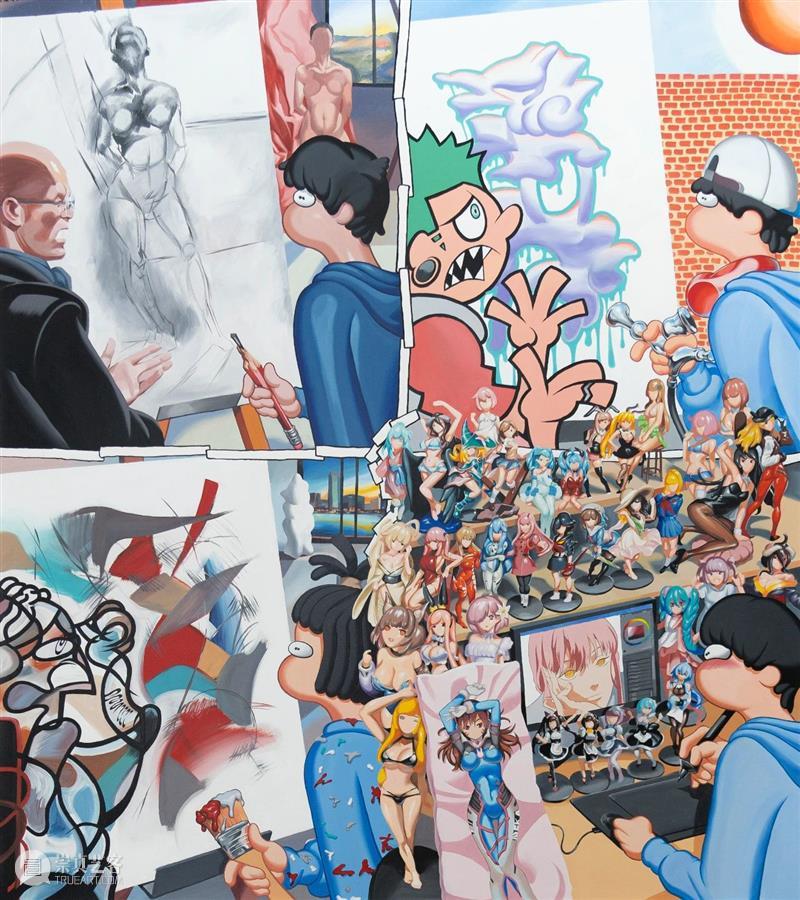
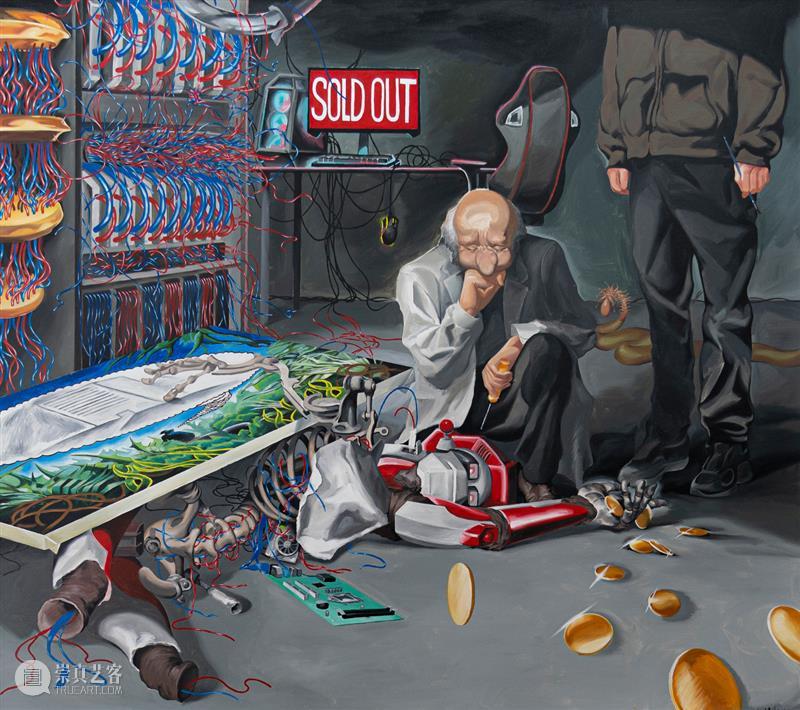
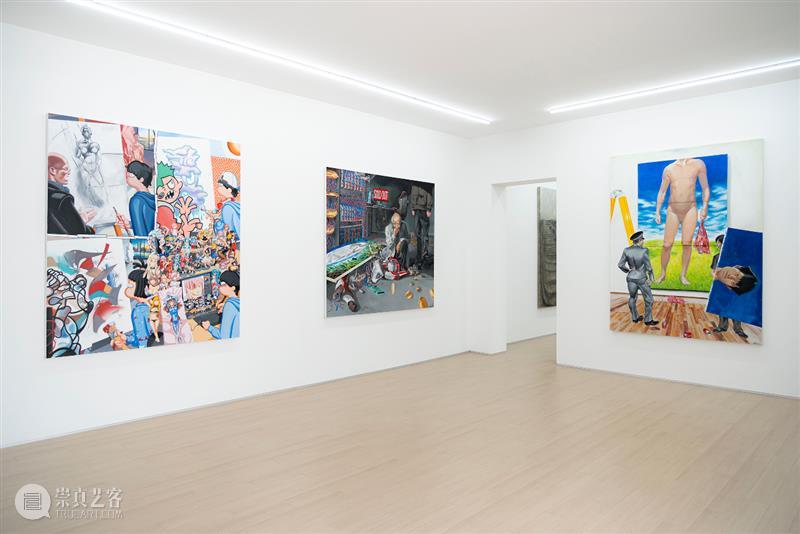

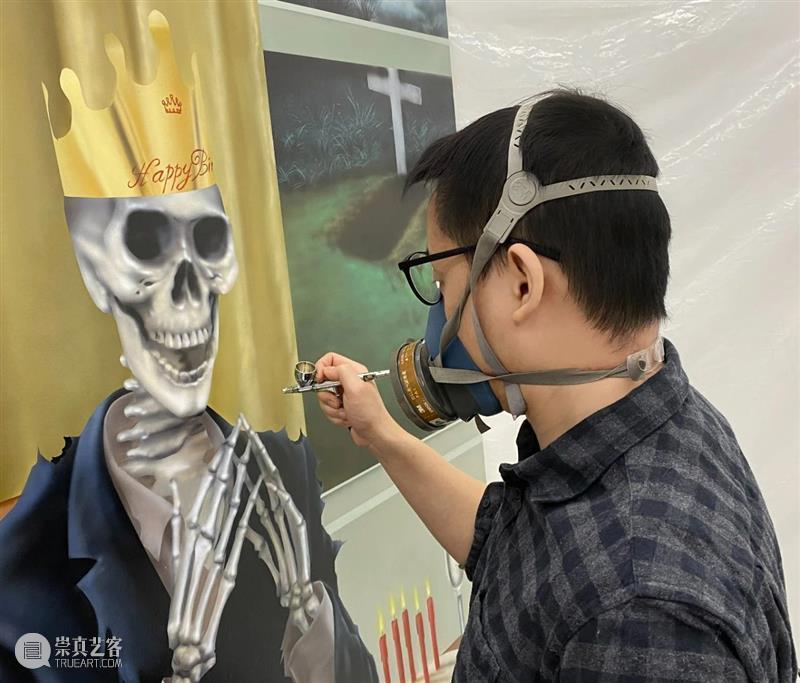
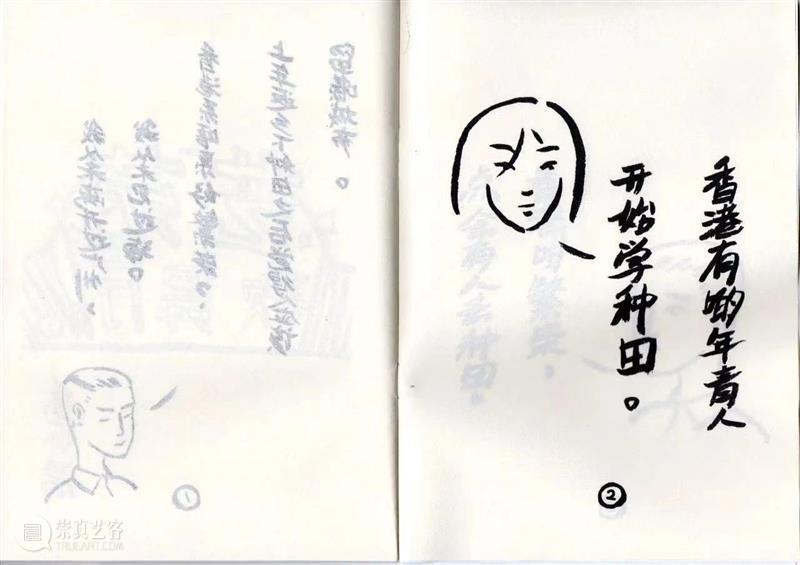
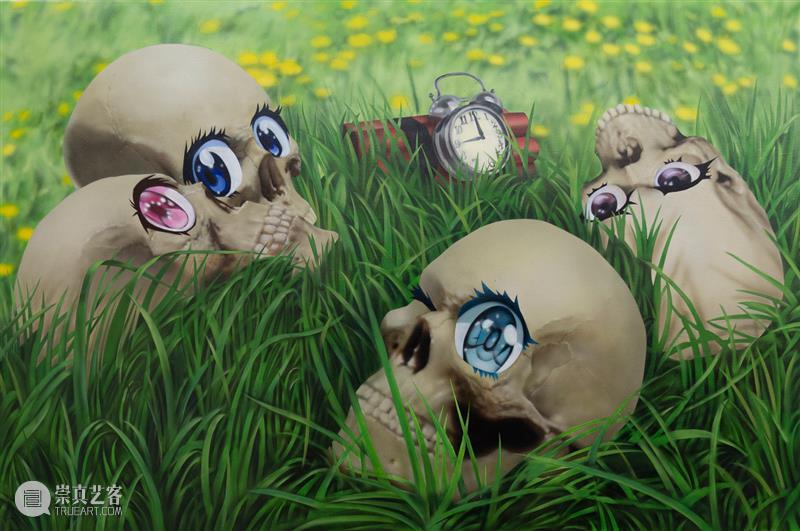
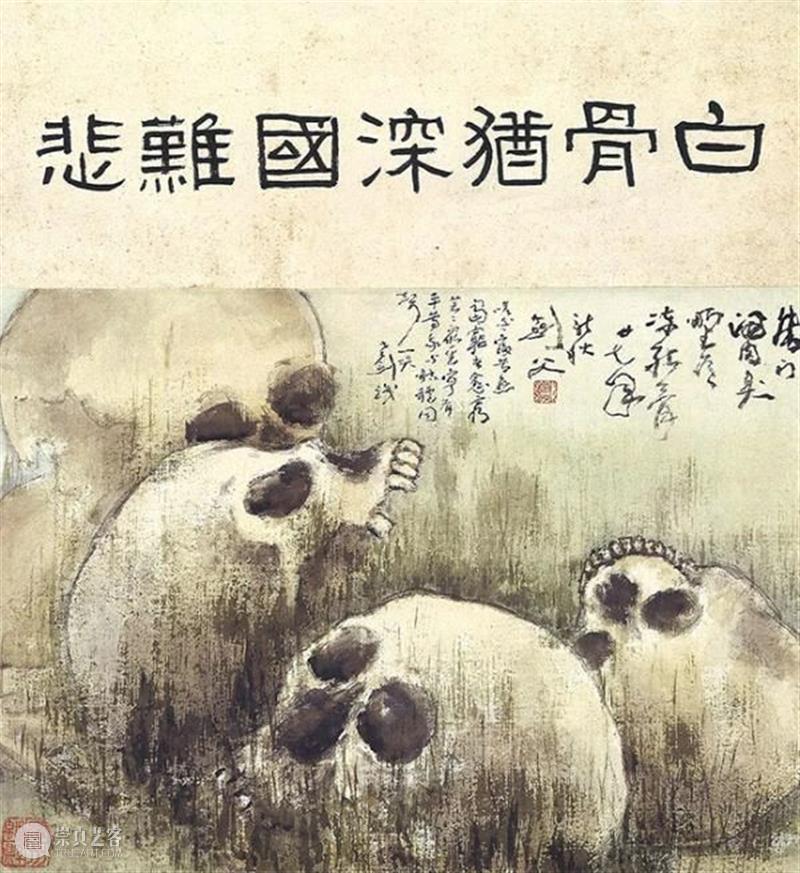
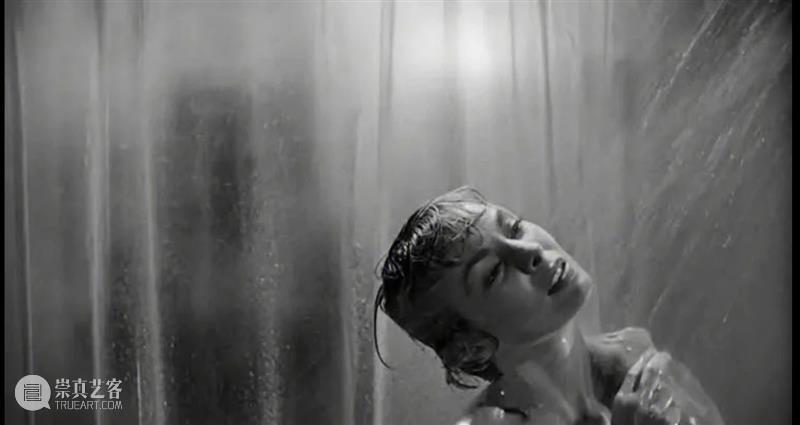
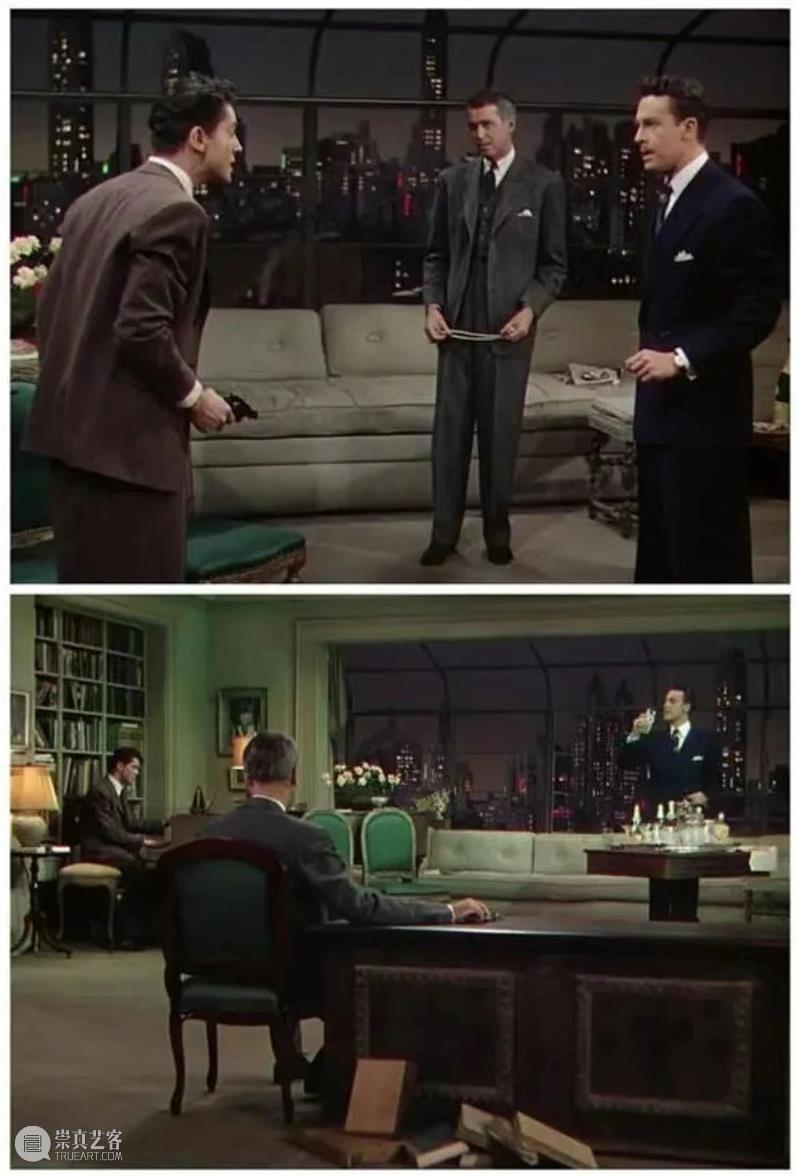
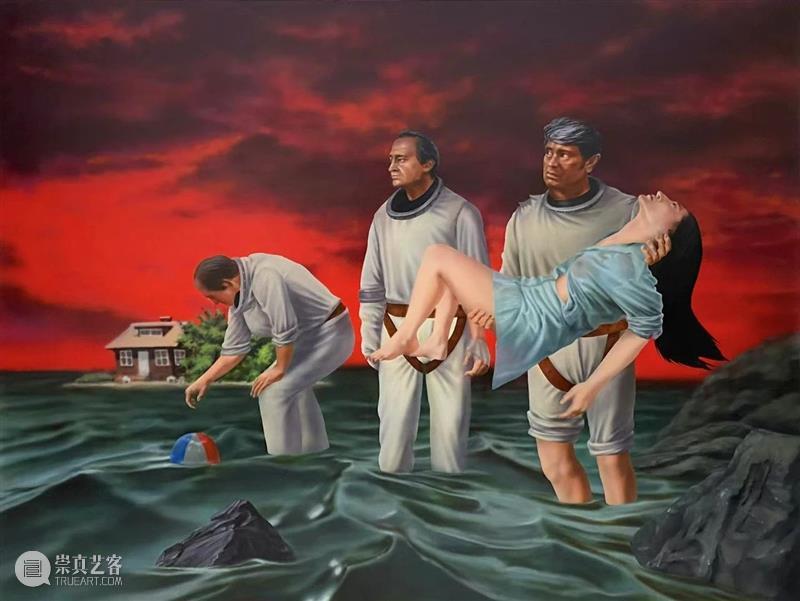
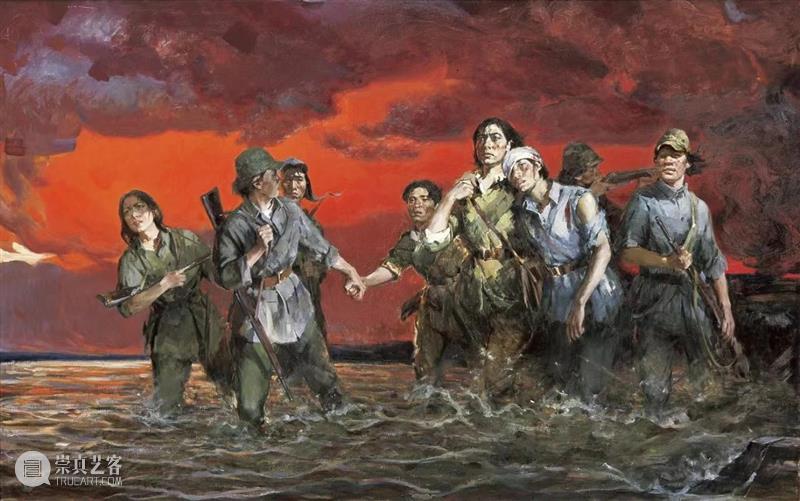
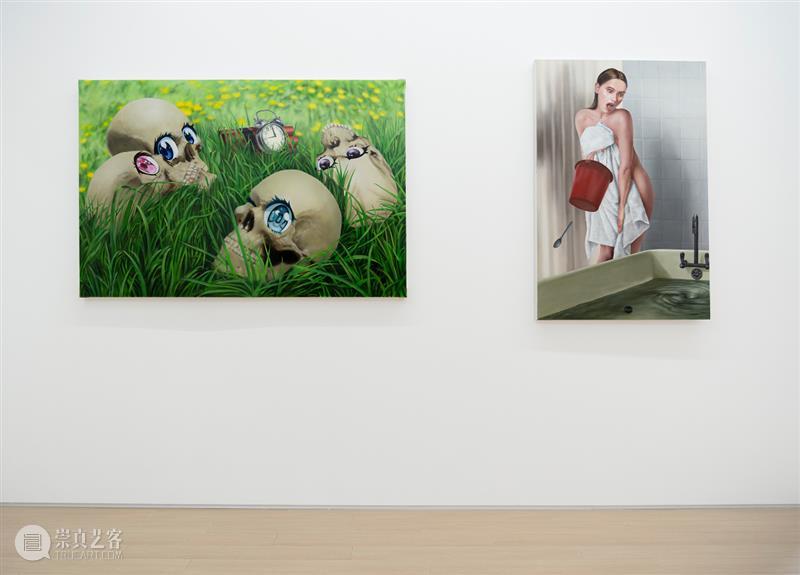

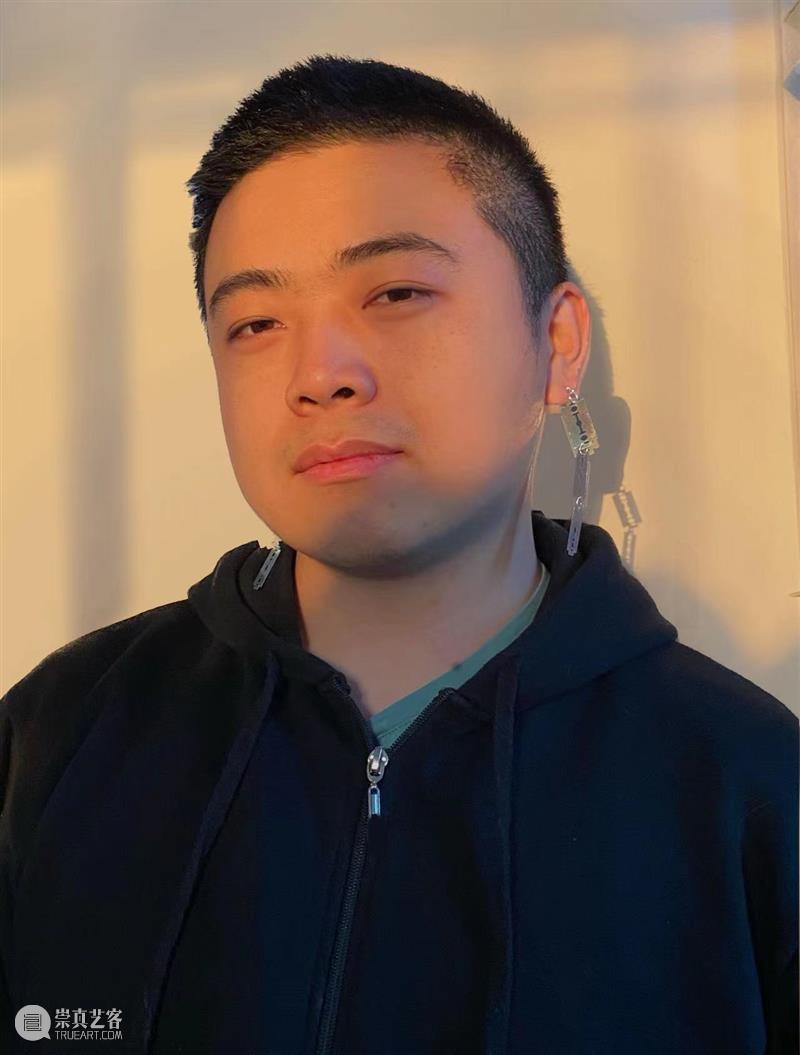
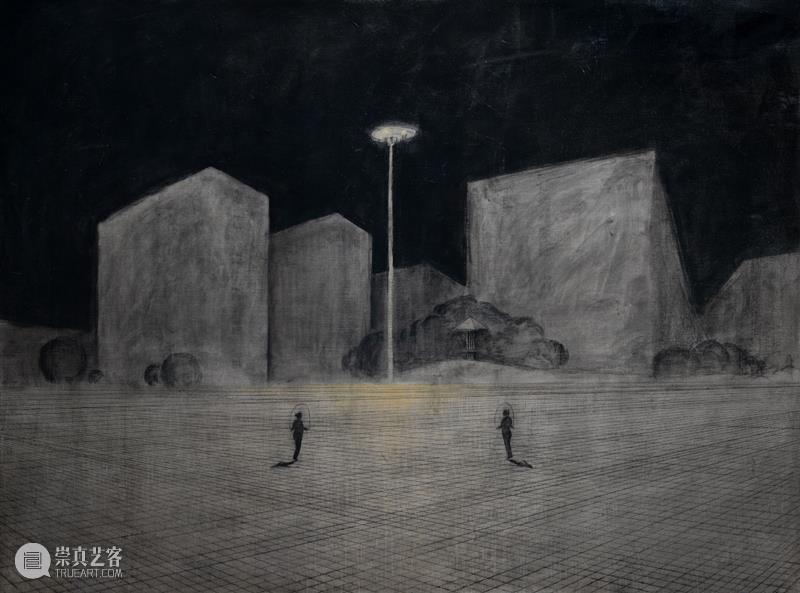
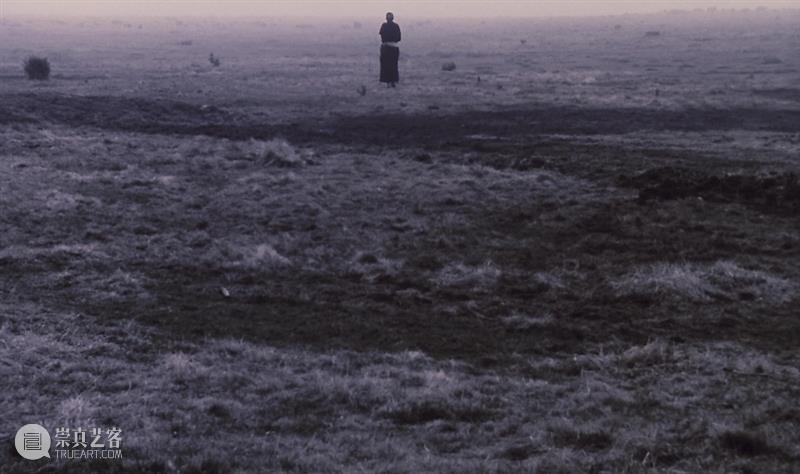
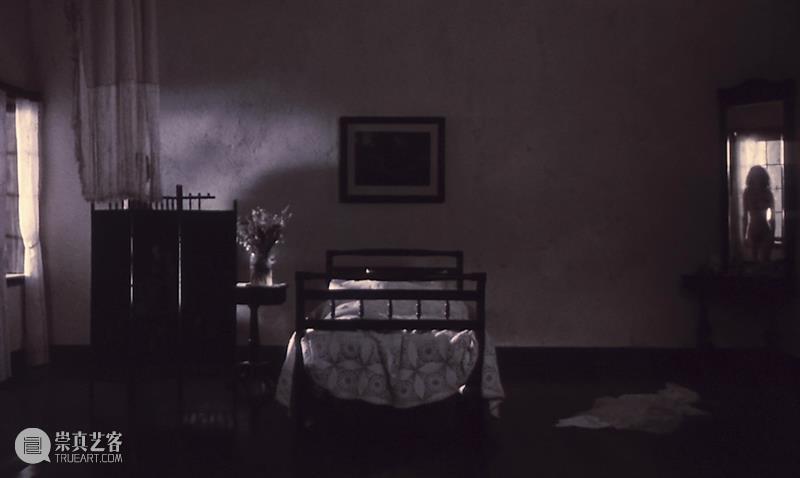
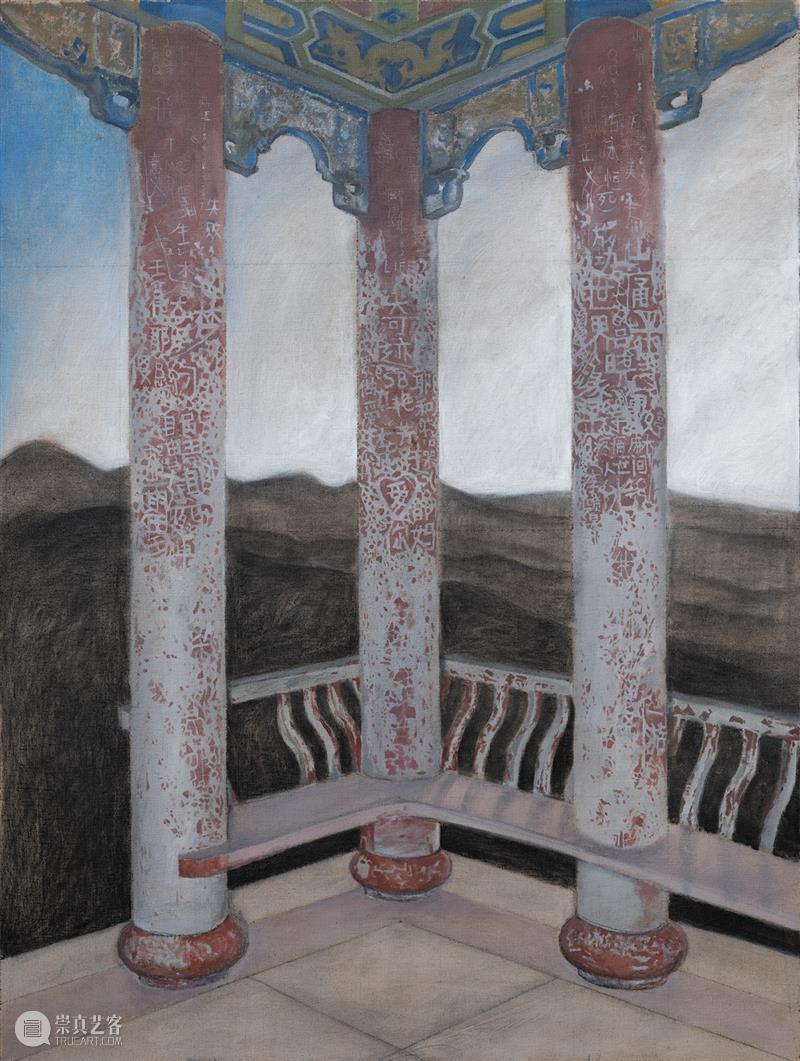
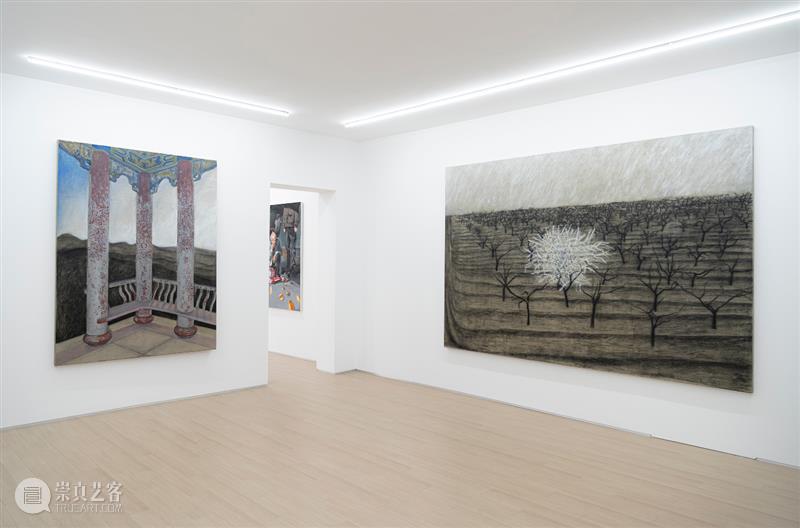

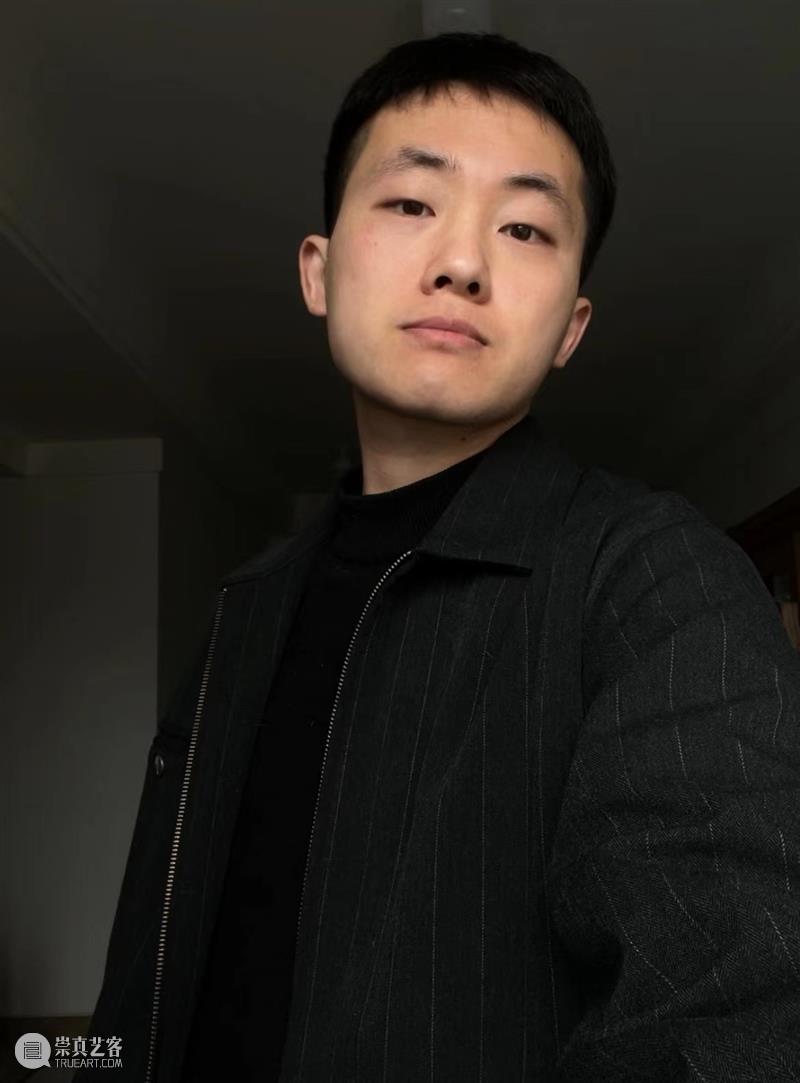
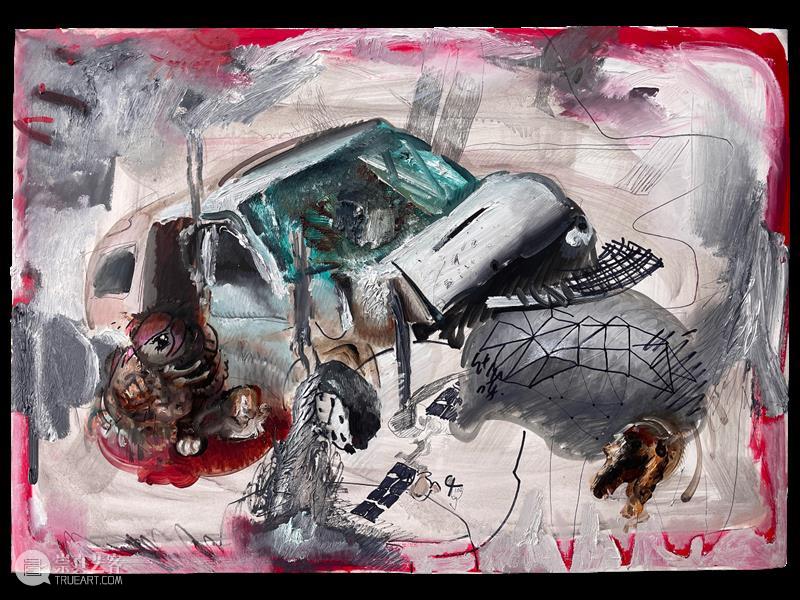
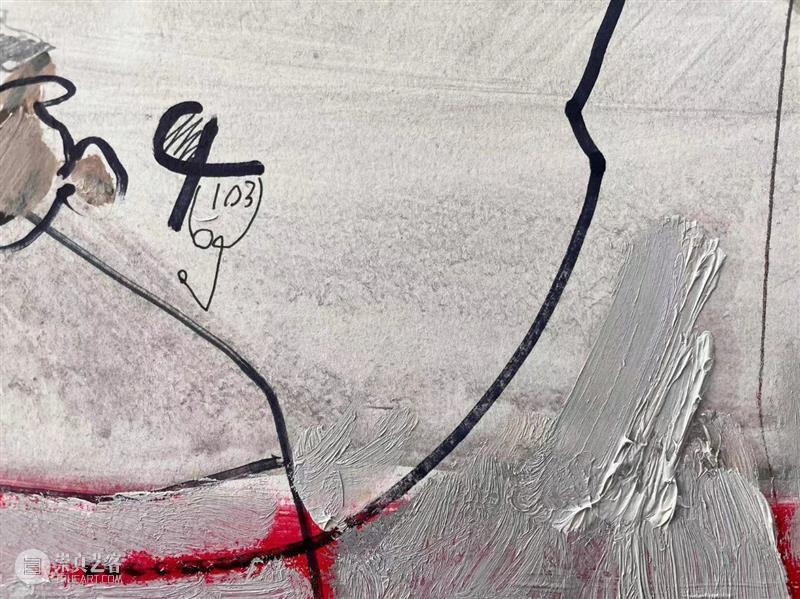
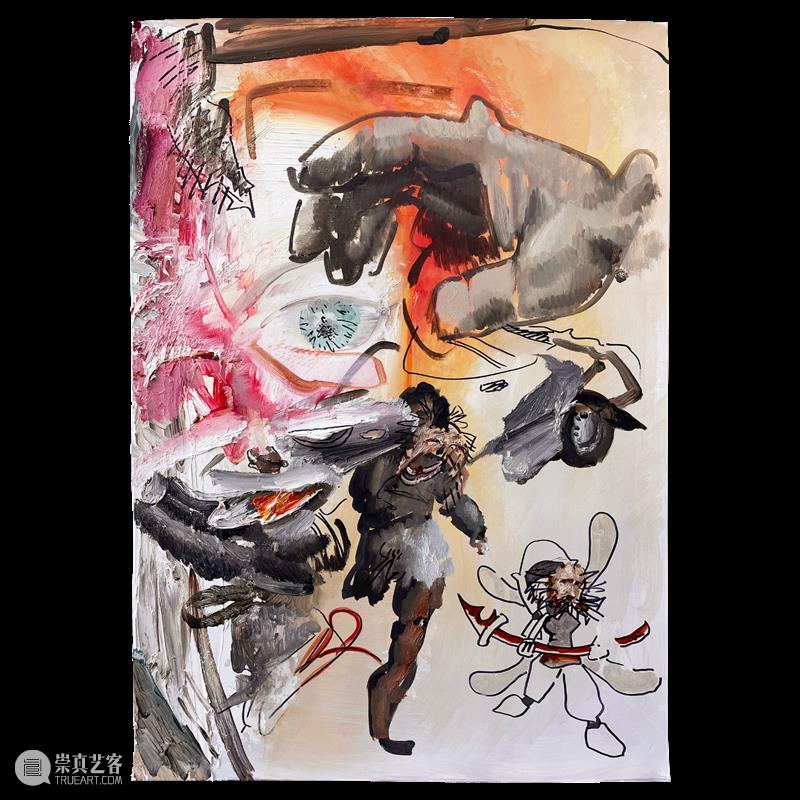
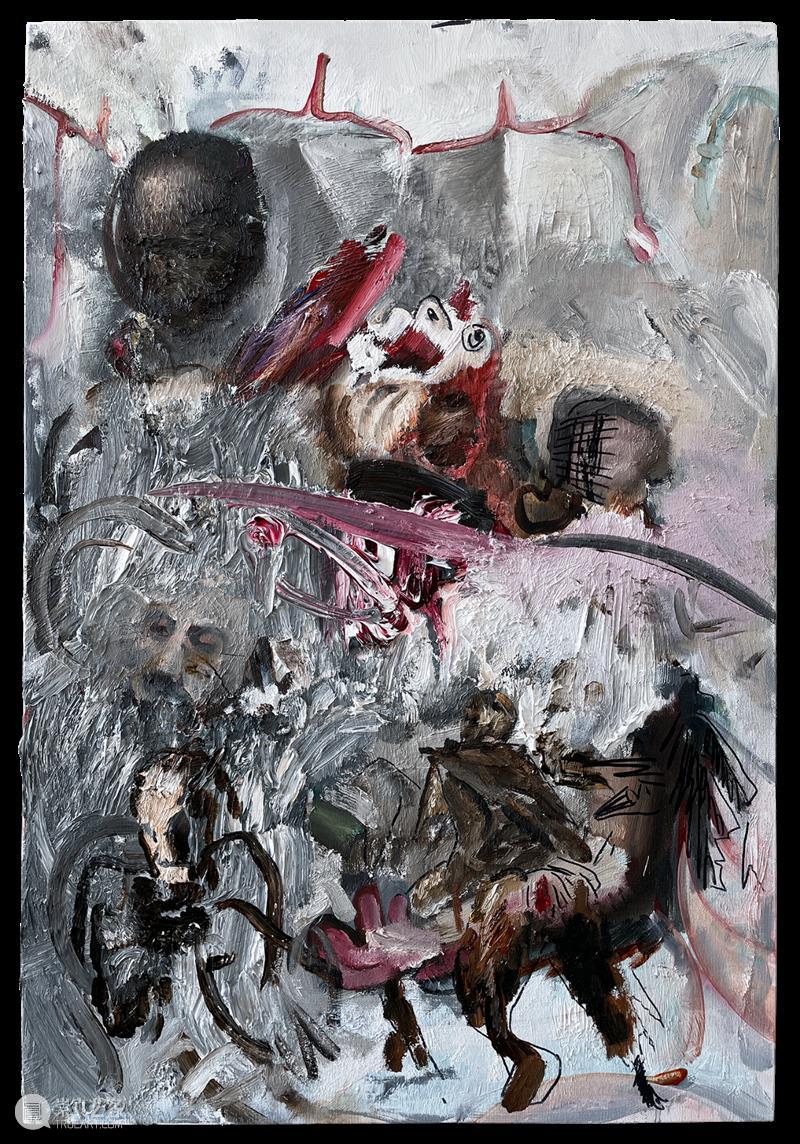
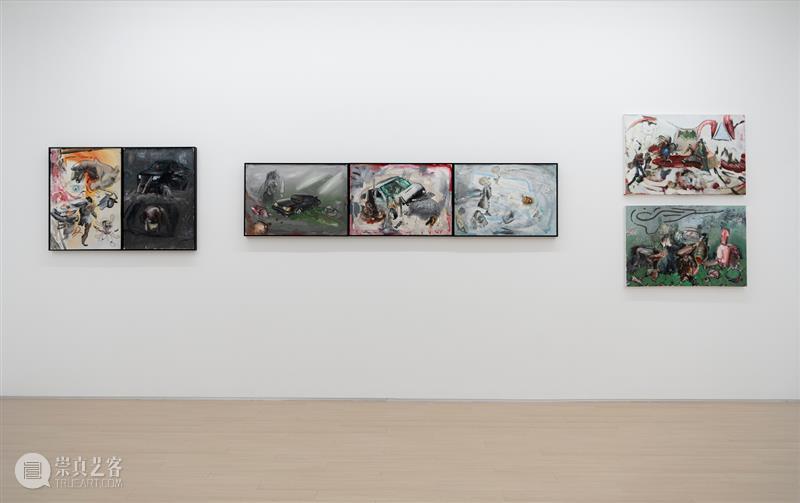
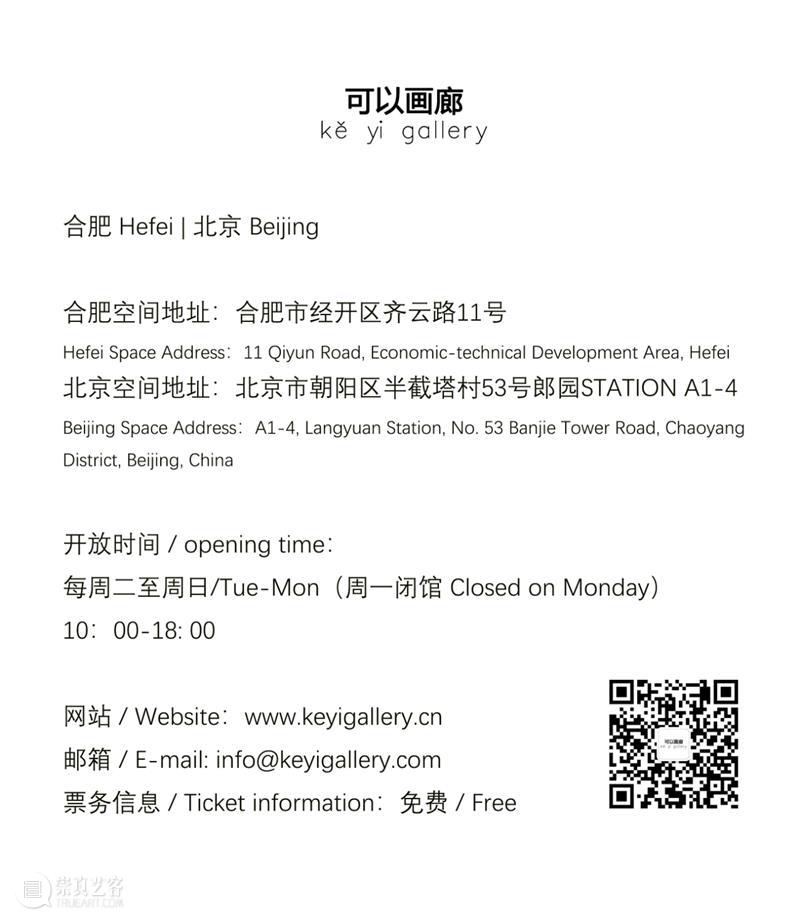


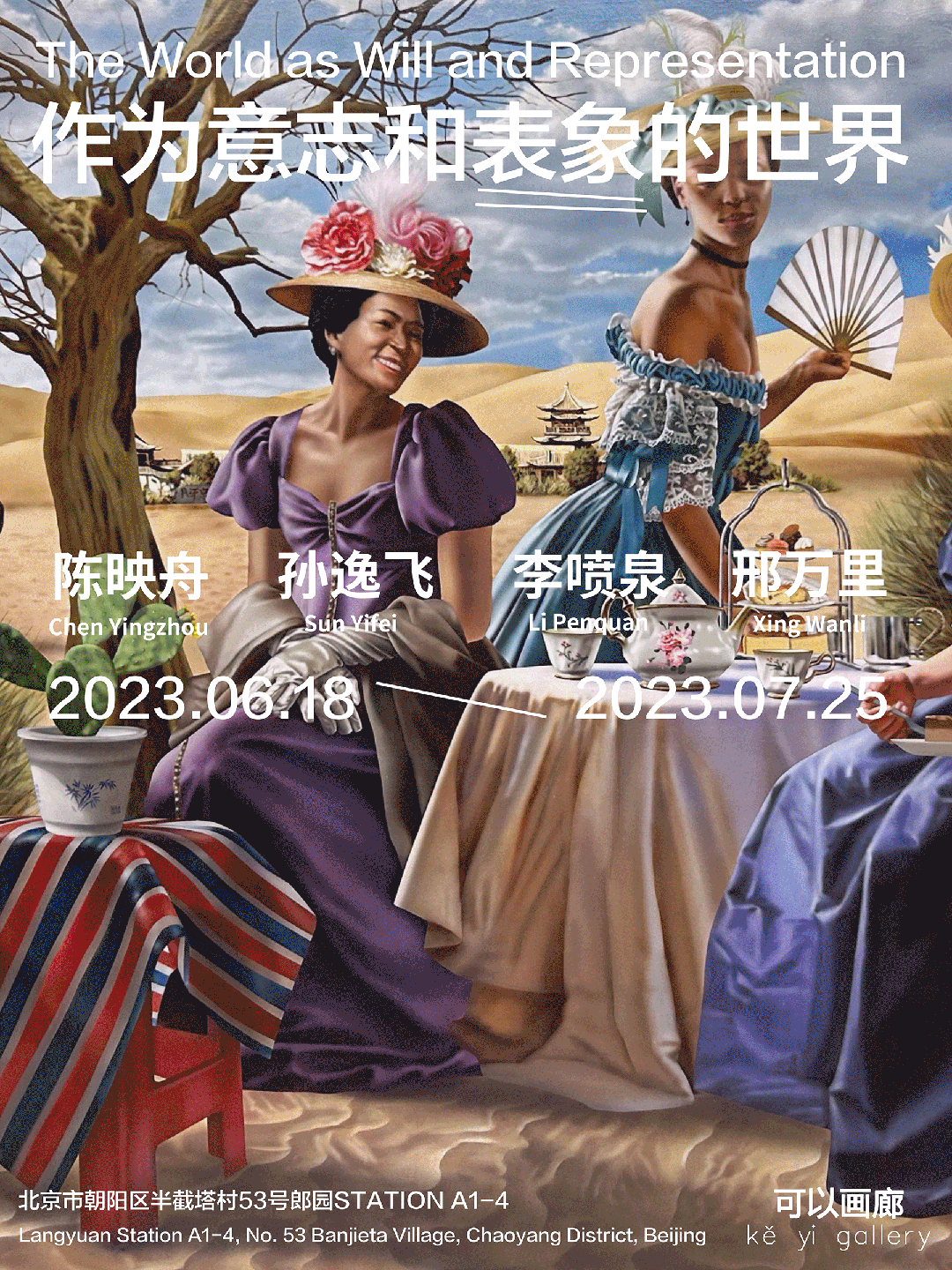





 分享
分享